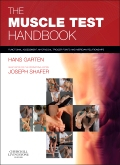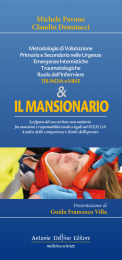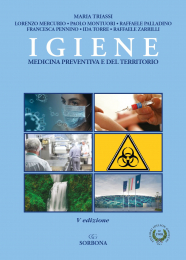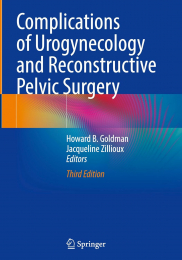Non ci sono recensioni
Description
Classic manual muscle testing has been shown to be an invaluable clinical tool in evaluating muscle function and for the assessment of patient recovery from neuromuscular dysfunction. Advances in Professional Applied Kinesiology (PAK) have ‘fine tuned’ traditional understanding to bring muscle testing into another dimension. Many of the diagnostic bonds of the past have been broken, allowing for an unsurpassed range in functional diagnoses. An extremely sensitive tool, PAK muscle testing allows the clinician to evaluate a much wider array of complex systems (cranial nerve problems, joint receptor abnormalities, and acupuncture meridian imbalances) than can be made using the classic testing methods.
The English language edition of this highly successful handbook has been specially prepared for the international reader. The most up-to-date PAK tests are described as well as myofascial stretch testing and post-isometric relaxation techniques. The handbook carefully explains testing procedures for almost 100 individual muscles; many more than are found in other texts on the subject. In a unique, quick reference approach, the book not only reviews muscle anatomy and physiology, but also offers many clinical pearls with regard to possible causes of muscle dysfunction. Accompanied by a wealth of illustrations, the book is clearly written in a user-friendly ‘double page’ design that maximizes understanding.
Table of Contents:
Foreword
Preface
Manual muscle testing - a modern diagnostic tool
Therapeutic considerations
The muscles
Muscles of mastication: M. temporalis
Muscles of mastication: M. masseter
Muscles of mastication: M. pterygoideus medialis
Muscles of mastication: M. pterygoideus lateralis
Suprahyoid muscles
Infrahyoid muscles
Muscles of the abdomen: M. obliqui abdominis
Muscles of the abdomen: M. rectus abdominis
M. abductor digiti minimi
M. abductor hallucis
M. abductor pollicis brevis
M. abductor pollicis longus
Adductor muscles
M. adductor hallucis
M. adductor pollicis
M. biceps brachii
M. brachialis
M. brachioradialis
M. coracobrachialis
M. deltoideus
Diaphragm
M. extensor carpi radialis (longus and brevis)
M. extensor carpi ulnaris
M. extensor digitorum
M. extensor digitorum longus
M. extensor hallucis brevis
M. extensor hallucis longus
M. extensor pollicis brevis and m. extensor pollicis longus
M. flexor carpi radialis
M. flexor carpi ulnaris
M. flexor digiti minimi
M. flexor digitorum brevis
M. flexor digitorum longus
M. flexor digitorum profundus
M. flexor digitorum superficialis
M. flexor hallucis brevis
M. flexor hallucis longus
M. flexor pollicis brevis
M. flexor pollicis longus
M. gastrocnemius
M. gluteus maximus
M. gluteus medius
M. gluteus minimus
M. gracilis
Hamstrings (ischiocrural muscles)
M. iliacus
M. infraspinatus
Mm. interossei and lumbricales manus
M. latissimus dorsi
M. levator scapulae
Neck extensor muscles
Neck extensors (deep suboccipital muscles)
Neck flexor muscles (deep)
M. obturatorius internus
M. opponens digiti minimi
M. opponens pollicis
M. palmaris longus
M. pectoralis major (pars clavicularis) (PMC)
M. pectoralis major (pars sternocostalis) (PMS)
M. pectoralis minor
Pelvic floor muscles
Peronei brevis and longus
Mm. peronei (brevis and longus)
M. peroneus tertius
M. piriformis
M. popliteus
M. pronator quadratus
M. pronator teres
M. psoas
M. quadratus femoris
M. quadratus lumborum
M. quadriceps femoris
Mm. rhomboidei
Sacrospinal and transversospinal system
Sacrospinal system: M. iliocostalis
Sacrospinal system: M. longissimus
Sacrospinal system: M. multifidus
M. sartorius
M. serratus anterior
M. soleus
M. sternocleidomastoideus (SCM)
M. subclavius
M. subscapularis
M. supinator
M. supraspinatus
M. tensor fasciae latae
M. teres major
M. teres minor
M. tibialis anterior
M. tibialis posterior
M. trapezius (pars inferior, pars ascendens)
M. trapezius (pars medialis, pars horizontalis)
M. trapezius (pars inferior, pars medialis)
M. trapezius (pars superior, pars descendens)
M. triceps brachii and m. anconeus
Neurovascular reflex points of the muscles of the skull
Anterior neurolymphatic reflex zones of the muscles
Posterior neurolymphatic reflex zones of the muscles
Nerves of the brachial plexus and nerve bottlenecks
Nerves of the lumbosacral plexus and nerve bottlenecks
Muscles - organ (meridian) - relation to nutrients
References and further reading




